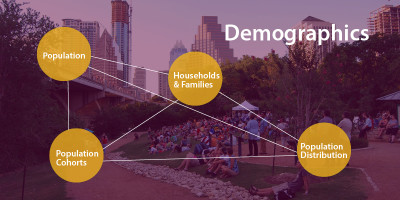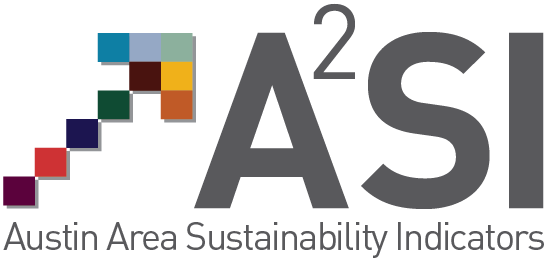Demographics
Demographic indicators are critical to understanding the sustainability of an area as they highlight important population trends that shape policy, planning, and program implementation for the region. Indicators in this section include: population growth, density, distribution, housing composition and occupancy, age and ethnicity cohort populations and projects.

Key Indicators
Population Growth
The region is the fastest growing metropolitan area in Texas, projected to grow 42% between 2010-2030. Over 50% of the population growth is attributable to domestic migration. Although all counties are growing in population, Hays and Williamson counties have higher rates of growth each year since 2014.
Households with Children
According to the U.S. Census Bureau, the percentage of households with children has stayed constant around 38% in the 2013-2017 estimates. Those with single mother householders comprise around 8.5%.
Hispanic Population
Individuals with Hispanic backgrounds are forecasted to become the majority population by 2040. Hispanic youth population grew 73% between 2000 and 2010 and will continue to be the fastest growing ethnic cohort but slow to a 19% increase from 2010 to 2020. The Hispanic population is densely concentrated in certain portions of the Austin area, mostly east of I-35.
Some questions to consider:
- How does the distribution of the Hispanic population intersect with available health, childcare, and economic resources or opportunities?
- What are the consequences of high rates of population growth in Hays and Williamson counties on transportation, mobility, and traffic?
- Will housing and luxury apartment developments accommodate the needs of the growing proportion of households with children?
